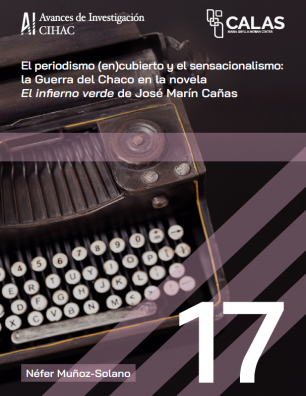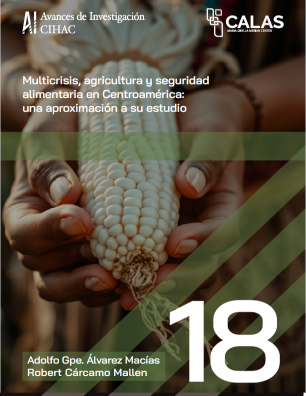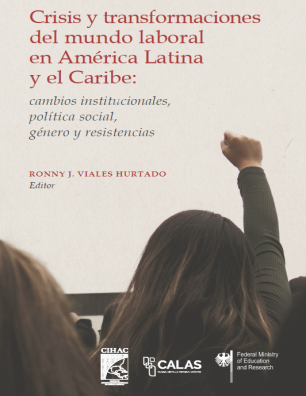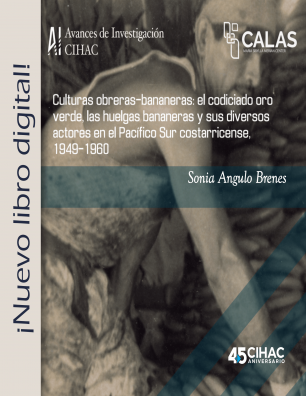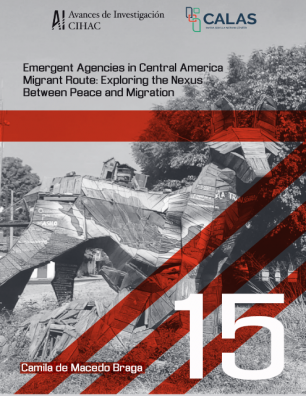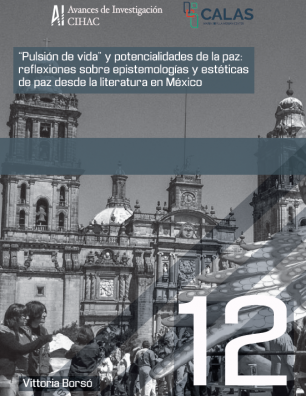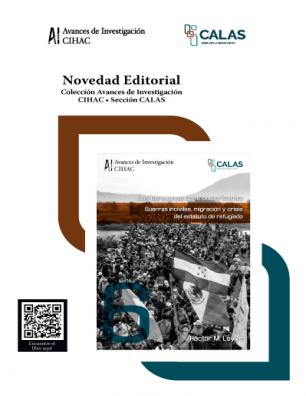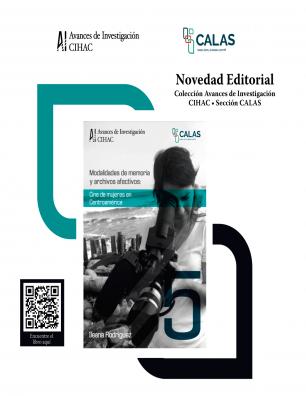Avances de Investigación CALAS / CIHAC
El periodismo (en)cubierto y el sensacionalismo: la Guerra del Chaco en la novela El infierno verde de José Marín Cañas
En la historia literaria de América Latina, la novela El infierno verde de José Marín Cañas se enmarca como un ejemplo prominente de los zigzagueos entre la ficción y la no ficción: un fenómeno en donde se novela dentro de un periódico y se reportea en la novela, empleando una estrategia de disimulo y recurriendo a artificios para atrincherar, camuflar, hibridar, imbricar y encubrir, a veces, lo fáctico con lo ficticio y, en otras ocasiones, lo ficticio con lo fáctico, cuyo producto son textos de una copiosa hibridez.
Multicrisis, agricultura y seguridad alimentaria en Centroamérica: una aproximación a su estudio
En esta investigación se analizaron los efectos de las crisis múltiples e interconectadas sobre la seguridad alimentaria en Centroamérica. Al igual que la economía global, la región ha sufrido los impactos de estas crisis, exacerbadas por la pandemia de COVID-19 desde el año 2020, pero las ha padecido con mayor intensidad debido al insuficiente desarrollo económico, social y político, la alta vulnerabilidad a los efectos climáticos y la dependencia alimentaria; Costa Rica representa una excepción gracias a su modelo de desarrollo más sólido.
Crisis y transformaciones del mundo laboral en América Latina y el Caribe: cambios institucionales, política social, género y resistencias
Las crisis latinoamericanas y caribeñas y, a partir de estas, las transformaciones del mundo del trabajo y del mundo laboral, se han convertido en un campo de disputa para las controversias sobre el estilo de cohesión social en la región.
Sonia Angulo Brenes. Culturas obreras-bananeras: el codiciado oro verde, las huelgas bananeras y sus diversos actores en el Pacífico Sur costarricense, 1949-1960
La presente publicación sobre la(s) cultura(s) obrera(s)-bananera(s) y sus luchas en el Pacífico Sur en el período comprendido entre 1949 y 1960 es un producto parcial del proyecto de investigación Bananos y obreros: protesta sindical e identidad laboral en las zonas bananeras del Pacífico Sur de Costa Rica, 1949-1960, inscrito en el Centro de Investigaciones Históricas de América Central (CIHAC) de la Universidad de Costa Rica, el cual finalizó en diciembre del 2023. El análisis se centra en tres capítulos.
Emergent Agencies in Central America Migrant Route: Exploring the Nexus Between Peace and Migration
On January 14, 2020, a new Central American Caravan left San Pedro Sula: the first of that year. Although the COVID-19 pandemic was only starting, these caravans would continue. By March 2021, an unprecedented number of Central American migrants were located on the border with the United States. In complex humanitarian emergencies such as this, not only the causes and effects are multiple, but so are the ways in which States and societies respond to them. By observing these responses, we established the link between peace, violence, and migration in three ways.
Jan Stehle. Colonia Dignidad – a transnational case of human rights violations and its economic dimensions in the past and present
La Colonia Dignidad se fundó en 1961 como asentamiento de expatriados alemanes en una remota zona del centro de Chile. en una remota zona del centro de Chile. El grupo estaba formado por unas 300 personas que habían emigrado a Chile siguiendo a su líder, el predicador laico Paul Schäfer. Colonia Dignidad cometió sistemáticamente delitos durante unas cinco décadas, desde su creación hasta la detención de Paul Schäfer en 2005.
Violência e paz – notas sobre Heli e Bacurau
Este trabajo presenta resultados parciales del proyecto de investigación "Representaciones de la violencia en Violencia en el cine: Brasil y México", desarrollado por el autor en el marco del Programa Laboratorio de Conocimiento - "Visiones de paz: transiciones entre la violencia y la paz en América Latina” del CALAS.
"Pulsión de vida” y potencialidades de la paz: reflexiones sobre epistemologías y estéticas de paz desde la literatura en México
Un concepto de paz que no esté formulado de manera heterónoma, es decir, que no dependa de la violencia, necesita una crítica tajante de la ontoteología, entendida como las éticas occidentales incuestionables y la negatividad que fundan las nociones de política y biopolítica. Debido a la violencia en la historia de la humanidad, encontramos en la estética literaria tanto el desobramiento de la violencia como signos de pulsión de vida que emergen en medio de esta, los cuales permiten experimentar las potencialidades del vivir y el convivir. Con respecto al siglo XXI en México, estéticas y na
Bordar, cantar y cultivar espacios de dignidad: ecologías del duelo y mujeres atrateñas
This book presents a compelling mix of personal memories and stories of black women that makes visible armed and structural violence, racism and resilience. Personal and collective narratives, threaded with a critical anthropological and feminist look at the armed conflict and its impacts in Chocó, are joined by the productions of black women academics on this territory.
De guerrilleros, subversivos y terroristas: Discursos sobre la violencia en el Juicio a las Juntas (Argentina, 1985)
This working paper seeks to contribute to the reflection on the meaning of the Judgment and at the same time to contribute to the social and political history of language in Argentina
Ciclos de violencia y género: los momentos de conflicto en América Latina como generadores de identidad de género
This study suggests that correct female behavior was a type of public discourse in Latin America; thus, when women broke with these traditional norms, they provoked "moments of anxiety".
Las caravanas centroamericanas. Guerras inciviles, migración y crisis del estatuto de refugiado
Images of the caravans of Central American migrants crossing the continent to reach the U.S. shocked media audiences around the globe. Associations were inevitable with the war in Syria and other countries that have provoked comparable displacements of people. The migrants' testimonies stated that they were fleeing violence, lack of employment, government corruption, a social crisis akin to a state of war.
Modalidades de memoria y archivos afectivos: Cine de mujeres en Centroamérica
The productions analyzed here are characterized, as is natural, by varied cinematographic planes, some more poetic than others, but in all of them there is a direct participation of the body and subjectivity in the processes they narrate, places where data persist that a sociological statistical count is not enough. All these women have produced poetics of interference filmed sparingly, with few resources and stripped of stridency.


